Back to top: All books
Introduction
Quantitatively, this is the second largest portion of the website, after the Record. It includes the full online version of the volumes that constitute the official series or reports and studies on the excavations.
The volumes are available in book form from Undena Publications. CDs are also available from the same publisher at nominal cost; they offer higher resolution versions of all graphic files. Other books are also available on AVASA website.
The major series is entitled UMS – Urkesh/Mozan Studies: it presents traditional reports on various aspects of the project, including both the ancient dimension (Urkesh) and modern persepctives (Mozan – e.g., geomorphology or ethnography).
[N.B.: The series Urkesh/Mozan Studies continues directly the earlier series which was simply entitled Mozan and which has been discontinued (hence there are no volumes 1 and 2 in the UMS series).]
For each monograph, the website page will provide the reader with a summary (reporting an abbreviated version of the table of contents) and hyperlinks leading directly to the PDF version of the publication. Under each singular page, abstracts about specific publications are sometimes offered.
Back to top: All books
UMS – Urkesh/Mozan Studies
This first section is dedicated to the major series related to Tell Mozan, entitled Urkesh/Mozan Studies; it continues directly the earlier series which was simply entitled Mozan and which has been discontinued (hence there are no volumes 1 and 2 in the UMS series).
The series Urkesh/Mozan Studies evolves directly from an earlier series entitled Mozan, of which it continues the numeration. The sequence of volumes is as follows.
Back to top: All books
Giorgio Buccellati and Marilyn Kelly–Buccellati (eds)
The Soundings of the First Two Seasons.
Bibliotheca Mesopotamica 20.
Malibu: Undena Publications, 1988.
PDF
TABLE OF CONTENTS
1. Introduction (Giorgio Buccellati and Marilyn Kelly–Buccellati)
1.1 Earlier work
1.2 The Mozan Archaeological Project
1.3 Results and perspectives
1.4 Acknowledgments
2. Scope of the Research (Giorgio Buccellati)
2.1 Environmental considerations
2.2 Historical considerations
2.3 Archaeological considerations
2.4 Methodological considerations
3. The High Mound: Introduction and Surface Collection (Marilyn Kelly–Buccellati)
3.1 Introduction
3.2 Distributional patterns
3.3 Conclusions
3.4 Mozan Ware descriptions
3.5 A note on mapping (Steven Hughey)
4. The Outer City: Introduction and Surface Collection (Judith Thompson Miragliuolo)
4.1 Introduction (Giorgio Buccellati and Marilyn Kelly–Buccellati)
4.2 Surface collection
4.3 Relative percentages
4.4 Distributional patterns
5. Soundings on the High Mound
5.1 Introduction (Giorgio Buccellati and Marilyn Kelly–Buccellati)
5.2 The stone building in Area B (Giorgio Buccellati)
5.2.1 Horizontal articulation
5.2.2 Main stratigraphic sequence
5.2.3 Artifact distribution
5.3 Le mur d'enceinte, Area K (Guy Bunnens and Arlette Roobaert)
5.3.1 Les restes visibles
5.3.2 Les sondages
6. Artifacts from the Excavations (Marilyn Kelly–Buccellati)
6.1 The ceramics
6.2 The seal impressions
6.2.1 Introduction
6.2.2 Technique
6.2.3 The Catalog
6.2.3.4 Conclusions
6.2.3.1 Door sealings from K1
6.2.3.2 Door sealings from K2
6.2.3.3 Other sealed objects
6.3 Other objects
7. Samples from the Excavations
7.1 Paleobotanical samples from the City Wall (Kathleen Galvin)
7.1.1 Sample One – K1.2
7.1.2 Sample Two – K1.14
7.1.3 Cultural Inferences
7.2 14C determinations (Linda Mount–Williams)
8. Regional Survey
8.1 Introduction (Giorgio Buccellati and Marilyn Kelly–Buccellati)
8.2 Tell Shermola (Amouda): Reconnaissance préliminaire (Guy Bunnens and Arlette Roobaert)
8.2.1 Étendue du site antique
8.2.2 Le tertre
8.2.3 Céramique et datation
9. Appendices
9.1 Comments on the Urkish Lion Pegs (Oscar Muscarella)
9.1.1 Metal analysis (Peter Meyers)
9.2.1 Introduction (Giorgio Buccellati)
9.2 Computer applications
9.2.2 CAD Reconstructions of the building in Area B (Andrea Parker)
|
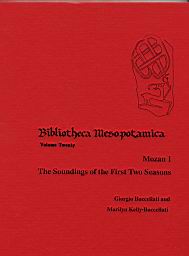
|
Back to top: All books
Lucio Milano,
with Mario Liverani, Giorgio Buccellati and Marilyn Kelly–Buccellati (eds)
The Epigraphic Finds of the Sixth Season.
Syro–Mesopotamian Studies 5/1.
Malibu: Undena Publications, 1991.
PDF
TABLE OF CONTENTS
1. Introduction. G. Buccellati and M. Kelly–Buccellati
1.1 The sixth season of excavations at Tell Mozan
1.2 Archaeological objectives
1.3 The epigraphic finds
1.4 Notes on third millennium ceramic chronology at Mozan
1.5 An inscribed sherd of the fifth season (M2 3)
2. The archaeological context – M. Liverani
2.1 The general setting
2.2 Stratigraphy of Area F1
2.3 The ceramic horizon
2.4 The findspot of the tablets
3. Philological presentation – L. Milano
3.1 Introduction
3.2 Description of the tablets
3.3 Texts in transliteration
3.4 Palaeography
3.5 Content and structure of the texts
3.6 Notes on the personal names
3.7 Conclusions
4. References
|
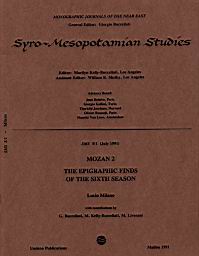
|
Back to top: All books
Giorgio Buccellati and Marilyn Kelly–Buccellati (eds)
Urkesh and the Hurrians.
A Volume in Honor of Lloyd Cotsen.
Bibliotheca Mesopotamica 26.
Malibu: Undena Publications, 1998.
PDF
Giorgio Buccellati: Preface
- Ernestine S. Elster: Lloyd Cotsen: A Brief Archaeological Biography
- Giorgio Buccellati: Urkesh as Tell Mozan: Profiles of the Ancient City
- Marilyn Kelly–Buccellati: The Workshops at Urkesh
- Federico Buccellati: 3–D Rendering and Animation at Tell Mozan/Urkesh
- Rick Hauser: The Equids of Urkesh: What the Figurines Say
- Piotr Steinkeller: The Historical Background of Urkesh and the Hurrian Beginnings in Northern Mesopotamia
- Mirjo Salvini: The Earliest Evidence of the Hurrians Before the Formation of the Reign of Mittani
- Gernot Wilhelm: Die Inschrift des Tišatal von Urkeš
- Vyacheslav Vs. Ivanov: Horse Symbols and the Name of the Horse in Hurrian
- Harry A. Hoffner, Jr.: Hurrian Civilization from a Hittite Perspective
|
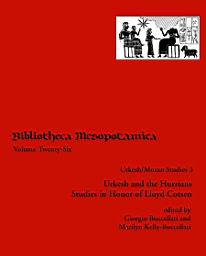
|
Back to top: All books
Sophie Bonetti (ed.)
Gli Opifici di Urkesh.
Conservazione e restauro a Tell Mozan.
Bibliotheca Mesopotamica 27.
Malibu: Undena Publications, 2001.
PDF
INDICE
Cristina Acidini: Presentazione
Indice delle materie
Lista delle figure
Lista delle illustrazioni
I. Le istituzioni
1. Giorgio Bonsanti: L'Opificio delle Pietre Dure: ampliamenti geografici e cronologici
2. Maurizio Michelucci: Il restauro archeologico e la Scuola di Alta Formazione per restauratori
3. Sophie Bonetti: Il laboratorio in cantiere
4. Giorgio Buccellati: Il cantiere come laboratorio
II. Il sito
5. Giorgio Buccellati: Il contesto storico e stratigrafico
6. Marilyn Kelly–Buccellati: L'arte di Urkesh
III. Le attivitá
7. Beatrice Angeli e Sophie Bonetti: Il laboratorio di restauro nella missione di scavo: problemi di intervento sul terreno; i materiali
8. Peter Pfälzner: The Functional Use of Conservation: from Sherds to Jars to Rooms
9. Giorgio Buccellati: Dai mattoni all'architettura
10. Federico Buccellati: Digital Photography and Architectural Modeling as Elements of Conservation
11. Paolo Emilio Pecorella, Lanfredo Castelletti, Giacomo Chiari: Commenti e dibattito
Bibliografia sugli scavi
|
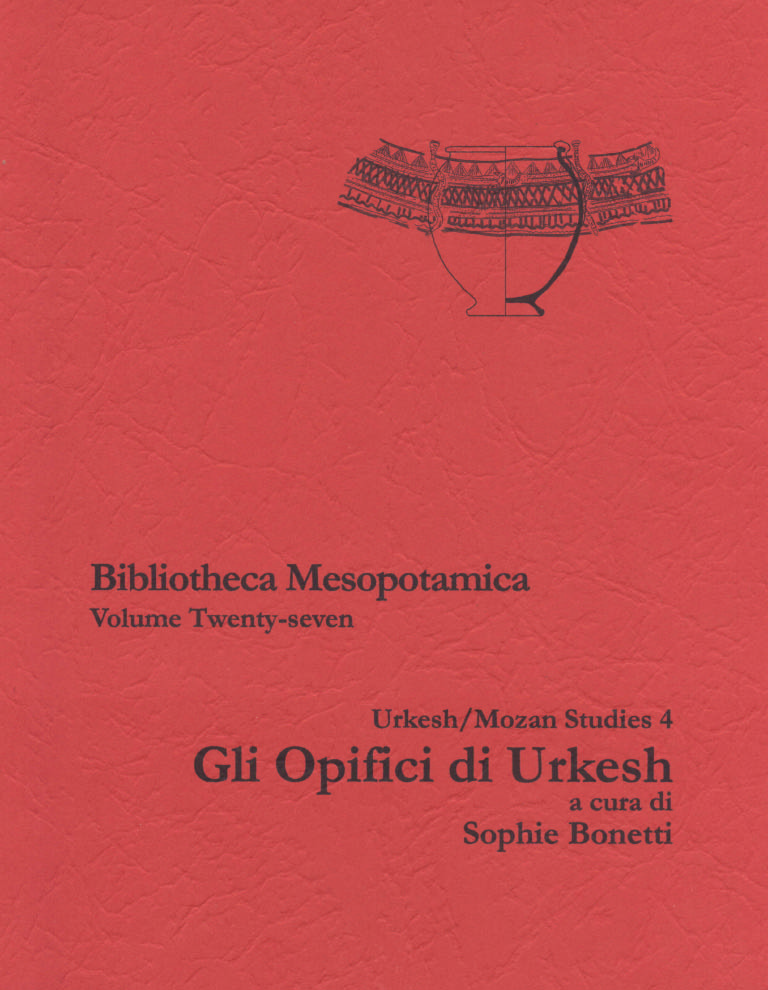
|
Back to top: All books
Rick Hauser
Reading Figurines
Animal Representations in Terra Cotta from Royal Building AK.
Bibliotheca Mesopotamica 28.
Malibu: Undena Publications, 2007.
PDF
CONTENTS:
Acknowledgments
Foreword by Giorgio Buccellati
A Guide for the Reader
INTRODUCTION:
Before the Typology
Animal Observed
Genera
The Template is Broken
Terminology
The Typology
Renderings of Roster Entries
Genera and Types
Views
Variables
Cranial & Caudal Views of the Animal Figurines – The Urkesh Corpus
Similar body types: de Genouillac at Telloh
Local Sources of Clay
Manufacture: Fabric
Manufacture: Color
Manufacture: Inclusions
Manufacture: Surface Treatment (Incisions, Combing, Folding, and Pinching)
New Approaches to Reading Figurines
Reading Figurines at Urkesh
Realism
Counting the Finds
A Rendering Legend
Domestication and Taming
Other Disciplines
The Impossible Bargain of the Ishar–Beli
COMPARANDA: Representative Sites
Comparative Material
GENUS Bos: DISCUSSION: The Genus and Catalog, The Urkesh Corpus
A miniature Genus
Measurements
Identification
Genus Bos
A Rare Example
Horns
GENUS Bos: CATALOG: The Urkesh Corpus
Bos
Tentative Identification
Related Stratified Finds
Related Unstratified Finds
Horns
Horns – A Tentative Identification
GENUS Ovis: DISCUSSION: The Genus and Comparative Material from Other Sites
A Domesticated Group
The Typology
The Figurines
Shared Characteristics
Other Fragmentary Finds (Body)
GENUS Ovis: CATALOG: The Urkesh Corpus
Ovis Type I
Tentative Identification
Related Stratified Finds
Related Unstratified Finds
Ovis Not Identified by Type – Fragments & Related Objects
Related Stratified Finds
Related Unstratified Finds
GENUS Canis: Comparative Body Types Canis
DISCUSSION: The Genus and Comparative Material from Other Sites
The Canid Body type
Canis at Assur
The Spitz Type
Attitude and Other Characteristics
Domesticated Dogs
Canis in Ancient Urkesh
GENUS Canis: CATALOG: The Urkesh Corpus
Canis
Tentative Identification
Related Stratified Finds
Related Unstratified Find
GENUS Felis / Ursus / Mellivora
Orders (Suborders) Insectivora / Rodentia (Hystricognathi)
Families Erinaceidae / Hystricidae
The Urkesh Corpus
Felis Type I Comparative Body Types
Felis Type I1 Comparative Body Types
DISCUSSION: The Genera and Comparative Material from Other Sites
A Type Apart
Lions at Urkesh
Carnivores and Herbivores at Mozan
The Typology
Felis Type I and Type II
Domestication of the Wild Cats
Taming Lions
Dancing Bears
Carnivora: A Beginning Alternative Typology
Incomplete Figurines and Fragments
CATALOG: The Urkesh Corpus
Carnivora
fera (Other Nondomesticated Animals)
Hystricomorpha (Porcupine)
Erinaceidae (Hedgehog)
Mustelidae (Honey Badger)
Tentative Identification (Ursus)
Related Stratified Find
GENUS Equus
The Genus and Comparative Material from Other Sites
Equus Types I, I/II Comparative Body Types
Equus Types II, III Comparative Body Types
DISCUSSION
What the Equus Figurines Say
The Mythic Horse
The Domesticated Horse
Interpreting Artistic Representations (Reading Figurines)
Reading Reality
Equus at Tell Mozan
A Combination of Realism and Abstraction
On the Way to Domestication
Equus Typology
Equus Types I, II Equus in oestrus
GENUS Equus
CATALOG: The Urkesh Corpus
Equus Type I
Tentative Identification
Equus Type I/II
Equus Type II
Tentative Identification
Equus Type III Caballine
Tentative Identification
Equus Not Identified by Type (Tentative Identification as Equus)
Related Stratified Finds
Related Unstratified Finds
COMPARATIVE TABLES
Commentary
|
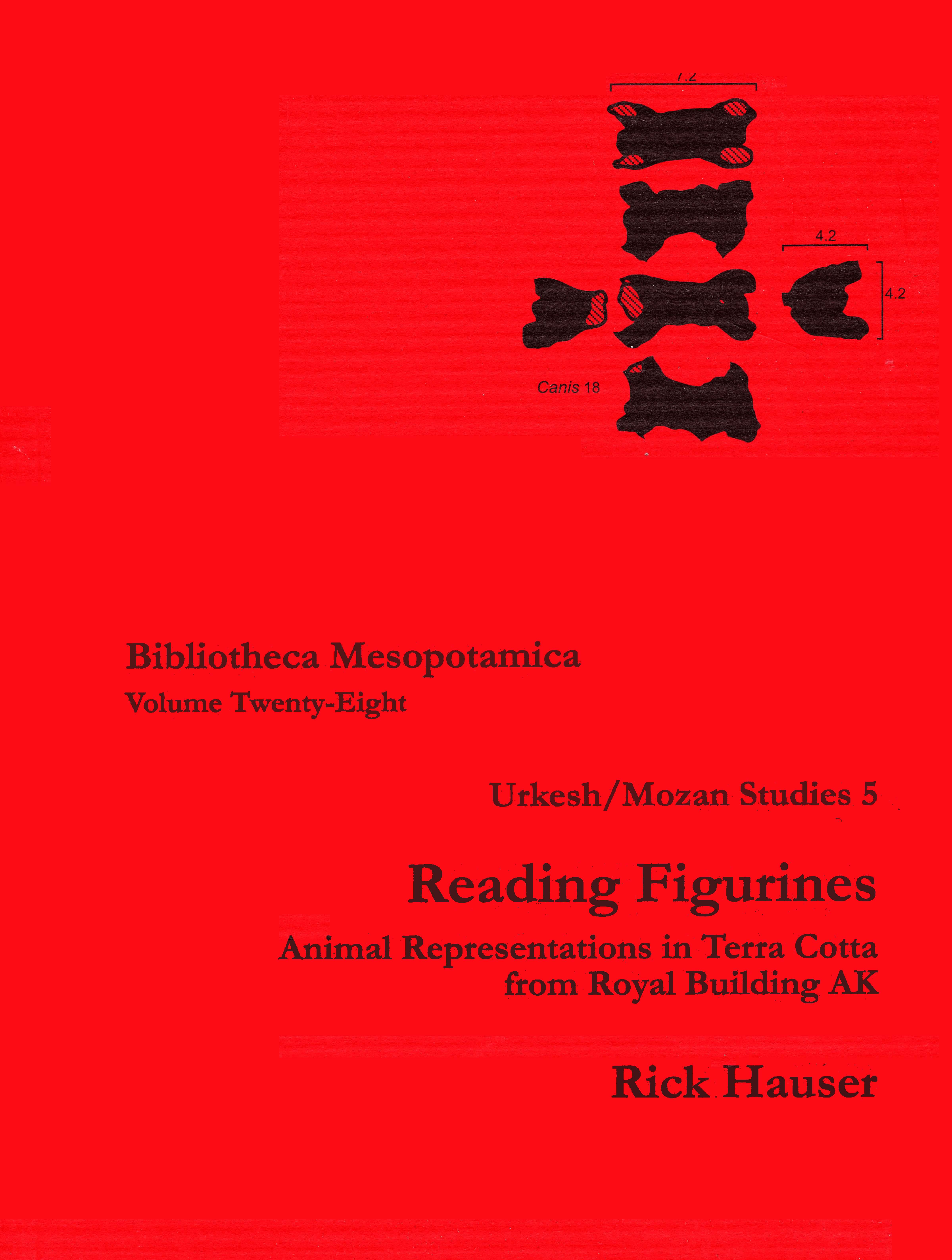
|
Back to top: All books
Federico Buccellati
Three–dimensional Volumetric Analysis in an Archaeological Context.
The Palace of Tupkish at Urkesh and its Representation.
Malibu: Undena Publications, 2016.
PDF
TABLE OF CONTENTS
Foreword
Preface
Acknowledgments
- Introduction
- Architectural Analysis
- The Elements and Process of Construction
- Theoretical Underpinnings of Architectural Analysis
- The Construction of 3D Models: Methodological Aspects
- Application to the Tupkish Palace at Urkesh
- Impact and Directions for Future Research
Bibliography
Appendix: BlockGen Vademecum and Program Code
AP Palace Wall Catalog
[Cf. also Federico Buccellati's dissertation.]
|
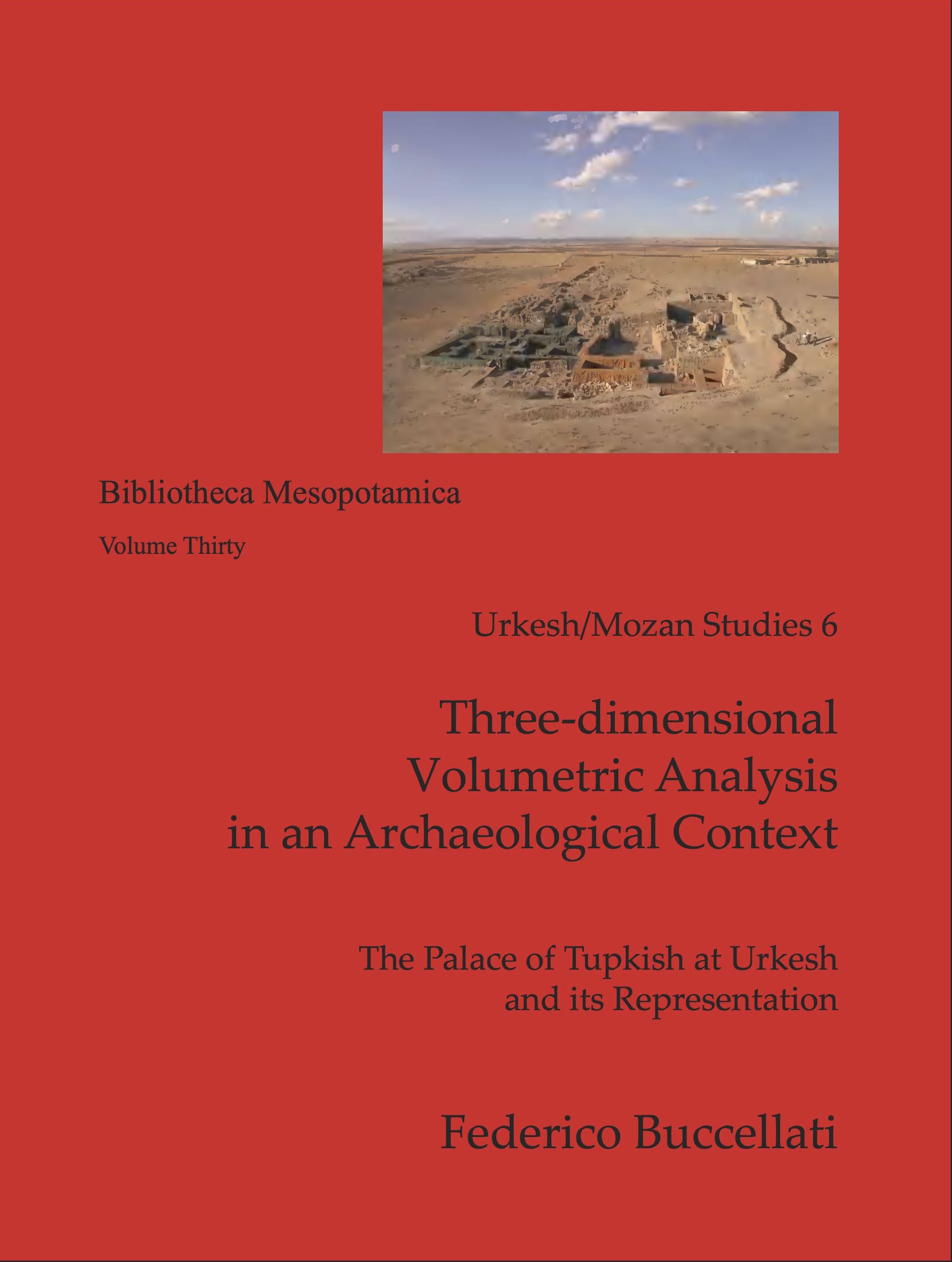
|
Back to top: All books
Matteo Delle Donne
Agricoltura, alimentazione e paleoambiente della Jazira siriana
tra IV e III mill. a.C. – le evidenze da Tell Mozan.
Napoli: UniOr Press, 2018.
ISMEO webpage
SHARE Libri webpage
PDF
Prefazione
Introduzione
- Un sito archaeologico nella piana del Khabur
- Un aspetto della paleobotanica: la carpologia, storia, teoria e metodi
- L'indagine archeobotanica a Tell Mozan: conservazione e recupero delle evidenze
- Sezione analitica: identificazione delle specie rinvenute
- Sezione diagnostica: le specie rinvenute
- Interpretazione dei dati
Appendice I. Figure
Appendice II. I resti vegetali. Tabelle
Summary
Bibliografia
|
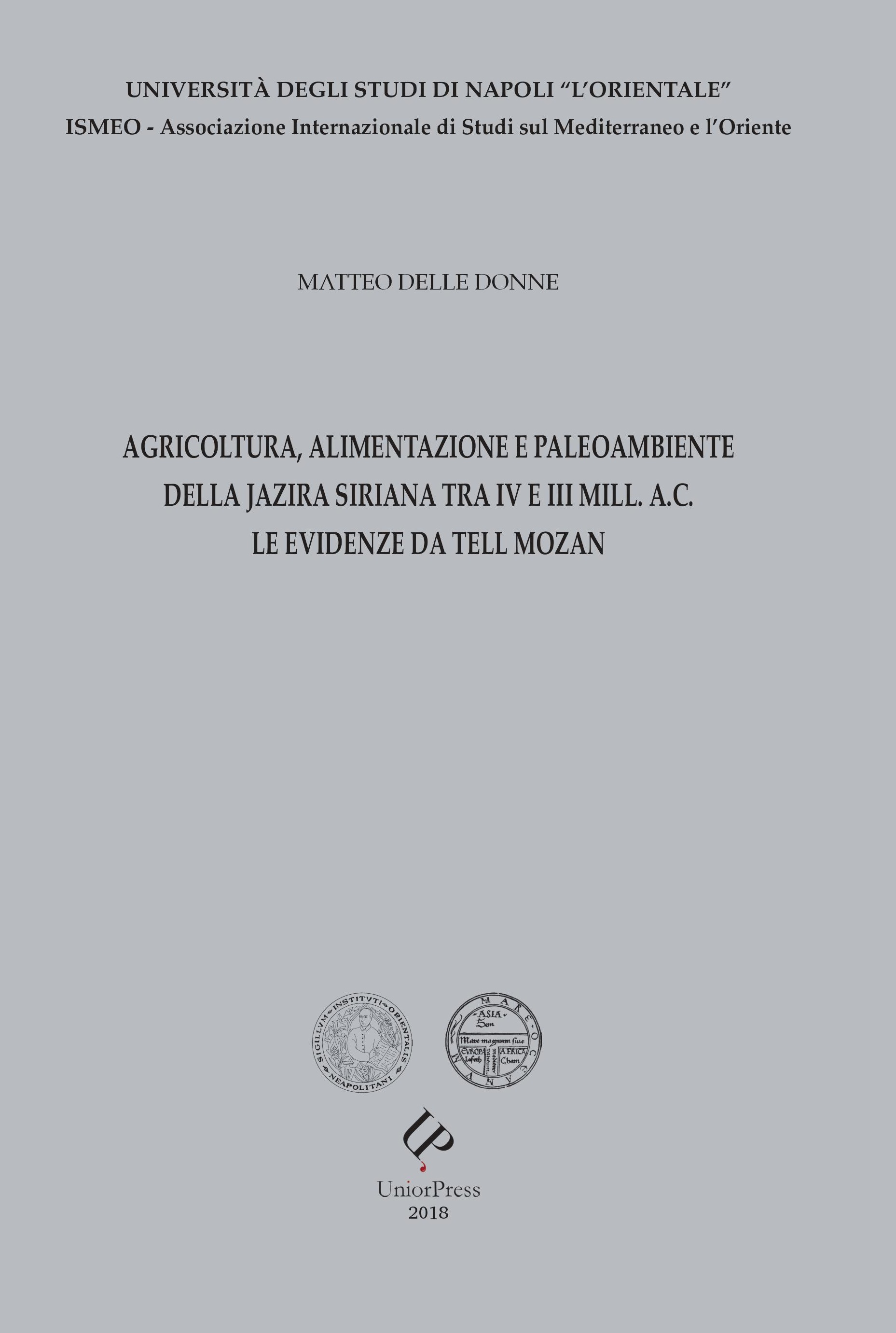
|
Back to top: All books
Other Studies
This second sections presents some other important works devoted to topics related to Tell Mozan:
- the first one (Critique – CAR) deals with a structural approach to archaeology;
- the second one (SANEM 3 = Festschrift Buccellati/Kelly-Buccelati) collects studies published in honour of Giorgio Buccellati and Marilyn Kelly-Buccelati.
Back to top: All books
Critique (CAR)
Giorgio Buccellati
A Critique of Archaeological Reason.
Structural, Digital, and Philosophical Aspects of the Excavated Record.
Cambridge: Cambridge University Press, 2017.
Publisher's page
Preface
1. Introduction
PART I: FUNDAMENTALS
2. Archaeology and Grammar
3. Categorization
4. The Search for Objectivity
PART II: ANALYSIS
5. Stratigraphic Analysis
6. Typological Analysis
7. Integrative Analysis
PART III: THE REASSEMBLED CONSTRUCT
8. The Invention of a Site
9. The Physical Record
10. The Referential Record
PART IV: THE PRIVILEGED VENUE
11. Digital Thought
12. Digital text
13. The Archaeological Record
PART V: THE WIDER FRAME
14. The Relevance of Structure
15. The Critical Approach
16. Hermeneutics
17. Conclusion
Bibliography
Index
[Cf. also CAR website.]
|
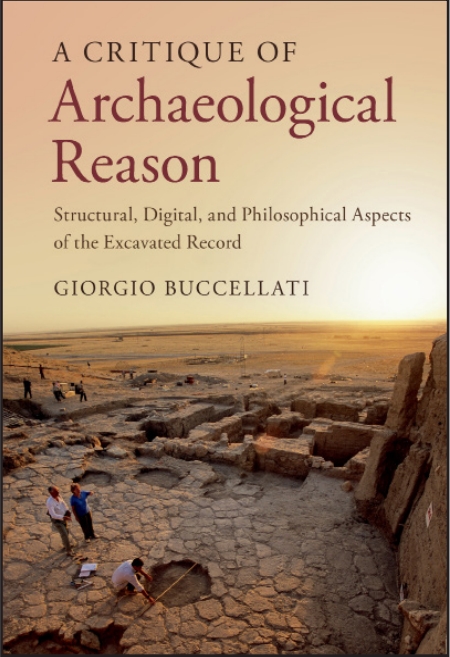
|
Back to top: All books
SANEM 3
Stefano Valentini and Guido Guarducci (eds)
Between Syria and the Highlands.
Studies in Honor of Giorgio Buccellati & Marilyn Kelly-Buccellati.
Studies on the Ancient Near East and the Mediterranean 3,
Roma: Arbor Sapientiae Editore, 2019.
PDF
Aknowledgements
Foreword (Stefano Valentini, Guidi Guarducci)
Giorgio Buccellati & Marilyn Kelly-Buccellati (Biography)
Giorgio Buccellati (Bibliography)
Marilyn Kelly-Buccellati (Bibliography)
Author Biographies
- Ruweiha, a Village from Northern Syria During Byzantine Period: Study of Preservation of Domestic Architecture (Maamoun Abdulkarim, Afaf Laila)
- Integrating Conservation, Archaeology and Community at Tell Mozan (Urkesh) (Neville Agnew, Martha Demas)
- The Wandering Life of the Hittite Seal Dresden ZV 1769 at the End of the 19th Century: New Archival Light (Silvia Alaura)
- Tales from the Desert Nomads: From Textual Sources till Gertrude Bell's Letters (Mohammed Alkhalid)
- Šamagan and the Mules of Ebla Syrian Gods in Sumerian Disguise (Alfonso Archi)
- A Tale of Two Temples of the Ninevite 5 Period (Piotr Bieliński, Dorota Bielińska)
- Give a Man a Fish or Teach Him How to Fish? Situated Learning and the Emergence of Communities of Practice in
Bronze Age Eastern Mediterranean and the Near East (Luca Bombardieri)
- How Kirta's Love for Blue-Eyed Huriyaa Clarifies Ebla Ophtalmic Terms and the 3rd Column of the 'Barton Cylinder' (Marco Bonechi)
- Houses of Nippur: An Architectural Study using EnCAB (Federico Buccellati)
- Symbol of Wisdom, Decorated with Earrings: The Ear in the Ebla Texts (Amalia Catagnoti)
- Quelques Aspects Méconnus du Statut et du Rôle des Quartiers-bâbtum dans les Villes Paléo-Babyloniennes (Dominique Charpin)
- Tell Mozan's Outer City in the Third Millennium BCE (Caitlin Chaves Yates)
- Alike but Different. Drinking Vessels in the Eastern Mediterranean around 2500-2000 BC (Marta D'Andrea, Agnese Vacca)
- Beasts and Wine. Zoomorphic Vessels and the Northern Corridor of the Near East (Vittoria Dall'Armellina, Elena Rova)
- On the Basalt Base from Susa (Sb5): A Reinterpretation (Rita Dolce)
- The Scepter of Sitagroi and Early Bronze Age Symbols of Power (Ernestine S. Elster)
- The Repentant God in the Flood Story. A Comparison between When Gods Were Men and Genesis 6-9 (Stefania Ermidoro)
- The Roman Bridge over the Chabinas: Meaning in Infrastructure (Diane Favro)
- Ladies and Cups: A Reconsideration of some Akkadian Artefacts from Northern Syria (Candida Felli)
- Seen Through a Glass Darkly: Reexamining Connections Between Mesopotamia and the Caucasus (Ellery Frahm)
- About the Eblaite Names of the "Cultic Journey" (Pelio Fronzaroli)
- La patria protoindeuropea e le migrazioni indeuropee (Thomas V. Gamkrelidze)
- Learning from Canis 203. Impressions of an Absent Artifact (Rick Hauser)
- Traces of Third Millennium Pastoralism in the Jebel Abd al-Aziz Region (Frank Hole, Yukiko Tonoike)
- Between Enduring Symbols and Elite Identity: New Glyptic Evidence from Nuzi (Marta Luciani)
- Through the Eyes of the Ancients. The Perception of Beauty in 3rd Millennium Syria (Yasmine Mahmoud)
- Thoughts on Ancient Textual Sources in Their Current Digital Embodiments (Massimo Maiocchi)
- Les Murs de Kilizu (Maria Grazia Masetti-Rouault, Olivier Rouault)
- A Note on Lions at Temple Entrances in Old and Middle Syrian Temples (Paolo Matthiae)
- Up and Down in Early Syrian Palaces: Spaces of Power Performance and Economic Wealth (Stefania Mazzoni)
- Some Considerations on Walter Andrae's "Urformen des Kultbaues", in Mensch und Baukunst. Eine Correspondenz 2
(1953): 1-5, or rather... On a Hidden Grundthema of Archaeological Research (Maria Gabriella Micale)
- Collection of Seals from the Settlement of Tell Hazna 1 (Syria) (Rauf M. Munchaev, Shahmardan N. Amirov)
- Miniatures of Wars: Fights, Skirmishes and Conflicts in Ancient Near Eastern Seals (Davide Nadali)
- Il ruggito del Leone. Qualche Osservazione sulle Immagini Ferine nel Mondo Siriano del III Millennio a.C. (Luca Peyronel)
- A Game of Goddesses (and Thrones?). Some Reflection about a Cylinder Seal Impression from the Royal Palace G of
Ebla (ca. 2300 BC) (Frances Pinnock)
- Wild Water Buffalo (Bubalus arnee [Kerr, 1792]) in the Ancient Near East (Daniel T. Potts)
- Going Red in The Iron Age II: The Emergence of Red-Slip Pottery in Northern Levant with Specific Reference to Tell Afis,
Chatal Höyük and Zincirli Höyük (Marina Pucci, Sebastiano Soldi)
- Nel Segno di Ebla. Memoria Topologica per la Città del Trono al Centro delle Quattro Parti del Mondo (Marco Ramazzotti)
- The Terqa Cloves and the Archaeology of Aroma (Monica L. Smith)
- Between Philology and Archaeology. Some Comments on Urartian Landscape Management (Marie-Claude Trémouille, Roberto Dan)
- Placentas, Sieves and the Ancestors (Willeke Wendrich)
- Giorgio Buccellati's Critique and Archaeological Explanation (Diederik J.W. Meijer)
|
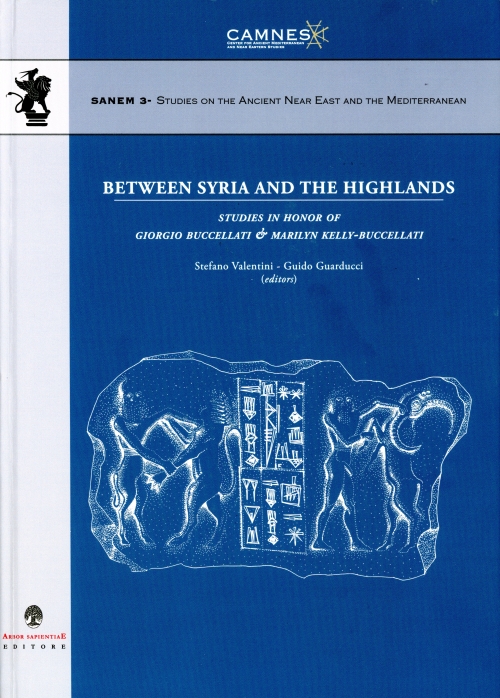
|
Back to top: All books
Guide Books and Exhibits
This third section displays some books with are guides to the site of Tell Mozan or catalogues of exhibits.
Some guides/catalogs are monolingual (e.g. Georgia), others are plurilingual (e.g. Invitation to Mozan, which is in English, Arabic, and Kurdish); sometimes the same publication has been translated (from its original Italian version) also in English and Arabic.
Back to top: All books
Invitation to Mozan
Giorgio Buccellati
An Invitation to Tell Mozan, Ancient Urkesh.
A multilingual guide to the site.
Mozan: The Urkesh Press, 2014.
PDF
TABLE OF CONTENTS
Introduction
In tune with the Past
The High Mound
The Urkesh Monumental Urban Complex
Urkesh Historical Context
A new ancient Syrian civilization
The Hurrians
The identification of Urkesh
Urkesh over the three millennia/1
Urkesh over the three millennia/2
Urkesh During the Fourth Millennium B.C.
A very early date for Urkesh, and why it matters
The other “urban revolution”
The Temple
The Temple of the Lion
Hurrian Gods
Other Hurrian ritual practices: the altanni
The Palace of Tupkish
Political power: Tupkish Palace
King Tupkish
The Abi
The abi
Stratigraphic history of the abi
Finds from the abi
Art
Urkesh art during the third millennium B.C.: Sculpture
Urkeshart during the third millennium B.C.: Stone Stele
Urkesh art during the second millennium B.C.: Expressionism
Urkesh art during the second millennium B.C.: Faces
Writing
Writing in Urkesh
Tablets from Urkesh
Glyptic
Urkesh glyptic and seals
The queen as ruler
The courtiers of Tar’am–Agade
Queen Uqnitum
The crown prince
Conservation – The Site as a Book
|
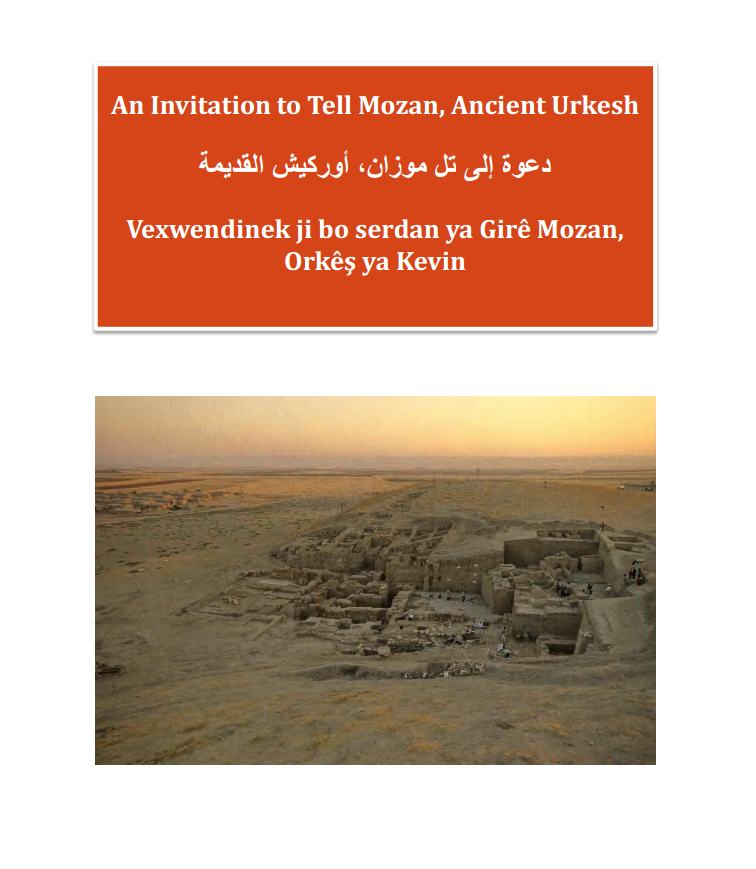
|
Back to top: All books
Dal Profondo
Back to top: All books
Dal profondo (Arabic: قدمت لها ميرلين كيللي بوتشيللاتي جورجيو بوتشيللاتي)
Back to top: All books
Georgia
Marilyn Kelly–Buccellati
Georgia. Paese d'oro e di fede.
Identità e alterità nella storia di un popolo.
Firenze: Società Editrice Fiorentina, 2016.
Publisher's page
English abstract
PDF
Premessa (Marilyn Kelly–Buccellati)
Prefazione (David Lordkipanidze)
Introduzione (Marilyn Kelly–Buccellati)
A volo d'uccello (Marilyn Kelly–Buccellati e Giovanni Santambrogio)
- I grandi periodi storici (a cura di Giovanni Santambrogio)
- Il Paese dell'oro (Nino Lardkipanidze)
- Conversione e spiritualità (a cura di Giovanni Santambrogio)
- La scrittura e l'umanesimo georgiano (a cura di Giovanni Santambrogio)
- Architettura e decorazione delle chiese georgiane (Marco Rossi e Alessandro Rovetta)
- Davide IV il Costruttore e il monastero di Ghelati (a cura di Giovanni Santambrogio)
- La chiesa di Ateni Sioni (a cura di Giovanni Santambrogio)
- Storia recente della Chiesa ortodossa georgiana (Mikheil Tsereteli)
Conclusione (Marilyn Kelly–Buccellati)
Bibliografia
Crediti fotografici
Collaborazioni
|
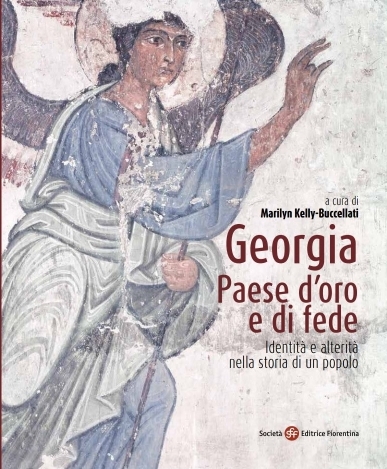
|
Back to top: All books
Young Future
Giorgio Buccellati and Yasmine Mahmoud
Archaeology for a young future.
An exhibit at the American University of Beirut.
Mozan: The Urkesh Press, 2017.
PDF
Archaeology
Foreword
Preface
Provocations
The dignity of the past
The temple
The necromantic shaft
The royal palace of Tupkish
A site alive
The vigor of the women
Of sherds and men
The power of ideals
Reflections
Acknowledgments
|
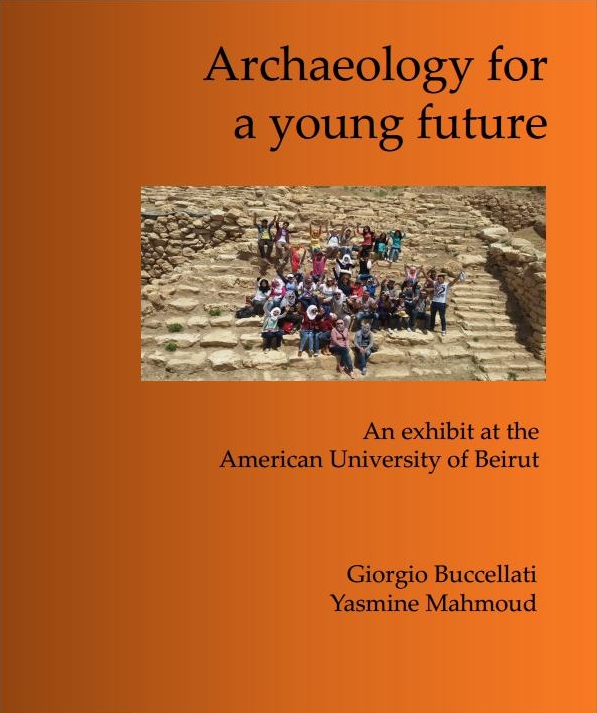
|
Back to top: All books
I millenni per l’oggi
Giorgio Buccellati, Stefania Ermidoro and Yasmine Mahmoud
I millenni per l'oggi.
L'archeologia contro la guerra: Urkesh di ieri nella Siria di oggi.
Firenze: Società Editrice Fiorentina, 2018.
Publisher's page
PDF
Premesse
Il valore dell'archeologia per una Siria unita (Mahmud Hamud)
La condivisione dei sostenitori (Giuseppe Guzzetti)
La promessa di un future giovane (Marilyn Kelly–Buccellati, Giorgio Buccellati)
Introduzione. L'urgenza di comunicare. La tematica della mostra (Giorgio Buccellati)
- Perché?
- Ospiti della storia. La città antica
- La dignità del passato. Conservazione del sito
- Una città morta che è viva. Turismo di Guerra
- Lo ieri di oggi. Fruizione e sostenibilità
- Urkesh parla siriano. Le mostre
- Archeologia per un future giovane. Educare come condividere
- Un buio che brilla di luce, un silenzio capace di suono (Enzo Sartori)
- ...e io? Riflessioni
Postfazione. «Il volto della città» (Domenico Quirico)
Ringraziamenti
Crediti fotografici
|
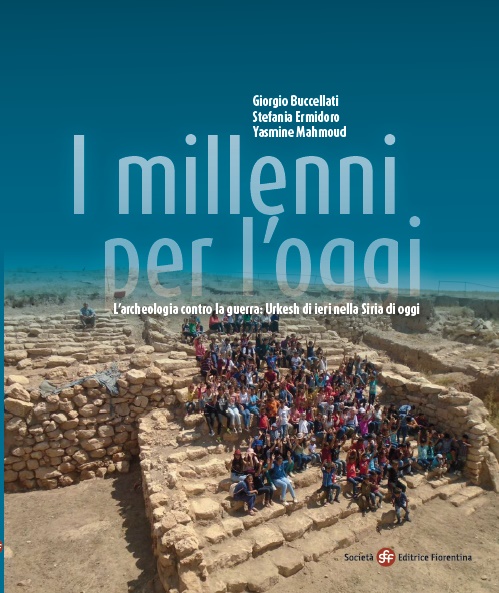
|
Back to top: All books
I millenni per l’oggi (Arabic:جورجيو بوتشيالتي ستيفانيا إرميدورو ياسمين محمود)
جورجيو بوتشيالتي ستيفانيا إرميدورو ياسمين محمود
Giorgio Buccellati, Stefania Ermidoro and Yasmine Mahmoud
األلفية منأجل اليوم علم اآلثار يف مواجهة الحرب: أوركيش األمس يف سوريا اليوم
I millenni per l'oggi.
L'archeologia contro la guerra: Urkesh di ieri nella Siria di oggi. Arabic translation.
Firenze: Società Editrice Fiorentina, 2018.
PDF
Arabic table of contents:
الألفية من
أجل اليوم
علم الآثار في مواجهة الحرب:
أوركيش الأمس في سوريا اليوم
تمهيد
قيمة علم الآثار من أجل سورية موحدة :بقلم محمود حمود
التشارك بين الداعمين :بقلم جوزيبي غوتسيتي
الوعد بمستقبل شاب :بقلم ميرلين كيلي بوتشيللاتي
مقدمة .الرغبة الملحة في التواصل موضوع المعرض :جورجيو بوتشيلاتي
- لماذا؟ تأملات
- ضيوف التاريخ . المدينة القديمة
- كرامة الماضي .صيانة الموقع
- مدينة ميتة لكن حية .سياحة الحرب
- أمس اليوم .إثمار واستدامة
- أوركيش تتحدث سوري. المعارض
- علم الآثار من أجل مستقبل شاب. التعليم كمشاركة
- ظلام يتوهج بالنور، صمت يصدح: إنزو سارتوري
- وأنا؟ تأملات
خاتمة."... وجه المدينة:" بقلم دومينيكو كويريكو
شكر
شكر للمصورين
|
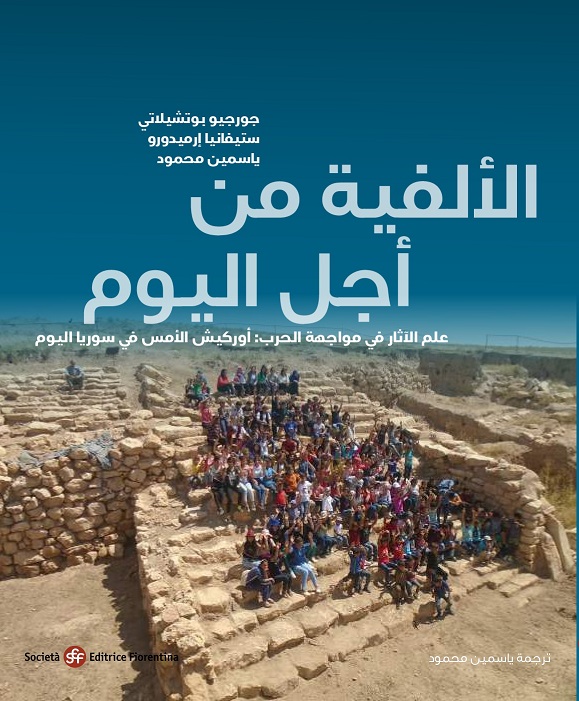
|
Back to top: All books
Millennia for Today
Giorgio Buccellati, Stefania Ermidoro and Yasmine Mahmoud
The Millennia for Today.
Archaeology agaist war: Yesterday's Urkesh in today's Syria.
Firenze: Società Editrice Fiorentina; Undena Publications: Malibu, 2019.
PDF
Foreword
The value of archaeology for a united Syria (Mahmud Hamud)
The supporters as partners (Giuseppe Guzzetti)
The promise of a young future (Marilyn Kelly–Buccellati, Giorgio Buccellati)
Introduction. The urgency to communicate. The theme of the exhibit (Giorgio Buccellati)
- Why?
- Guests of history. The ancient city
- Dignity of the past. Site conservation
- A dead city, yet alive. Tourism of war
- The yesterday of today. Fruition and sustainability
- Urkesh speaks Syrian. The exhibits
- Archaeology for a young future. Education as sharing
- A darkness that shines with light, a silence alive with sound (Enzo Sartori)
- ...and I? Reflections
Afterword. «...the face of the city» (Domenico Quirico)
Acknowledgments
Credits
|
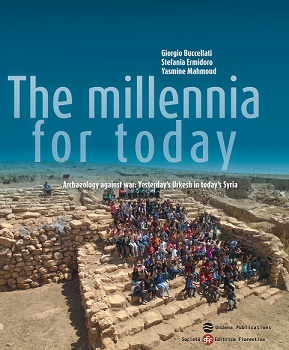
|
Back to top: All books